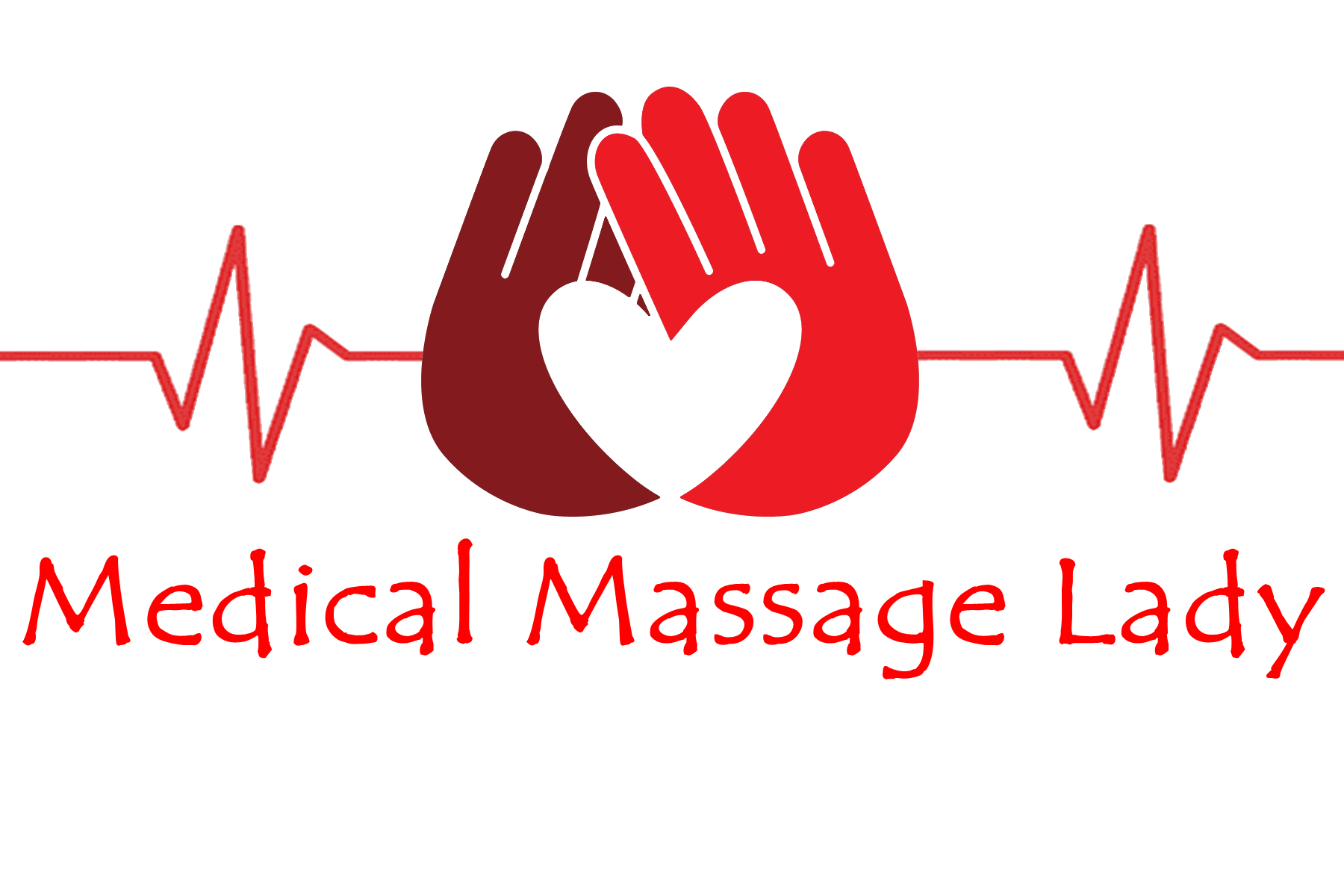- 07736 104738
- sam@medicalmassagelady.com
- Mon - Sat, 8:00 - 18:30
I am asked by clients on a regular basis whether sports massage is as good as foam rollering or stretching, and the benefits would certainly promote enhanced performance, improved recovery, prevention of injury and improved mobility. Sports massage, foam rollers and stretching can all have an important role in musculoskeletal health, each having their own benefits, but the best option will most likely be dependant on the individual and their particular issues.
It is difficult to 100% prove the benefits of massage due to the numerous variables involved, but given its use for so many years it is clearly beneficial. Experienced therapists will identify issues through palpation of the muscles and provide suitable exercises to reduce the risk of injury, by improving strength and flexibility.
The problem is that people can be apprehensive about sports massage as it can be painful, but it should only be uncomfortable in tight areas and an experienced therapist will adapt to your tolerance level to ensure the most benefit. The physical benefits far outweigh the discomfort felt during the treatment, something which my clients repeatedly acknowledge.
While using a foam roller and stretching will maintain the benefits of sports massage, sports massage will always come out on top, because if nothing else, the surface area of a thumb will always access those hard to reach areas better than a foam roller. However, the effectiveness of the massage is dependant on the skills of the therapist.
FOAM ROLLING
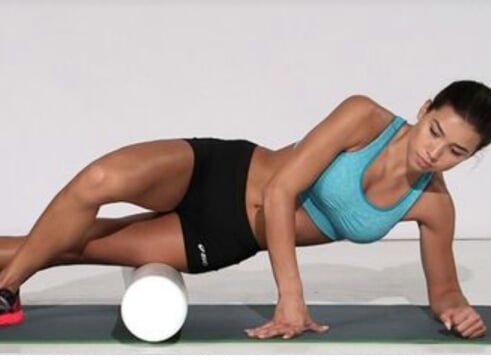
Foam rollers were originally used for support and to work on standing balance by physios . They can be very effective on the lower body, offering broad myofascial release, but not so much on the upper body, where the large surface area of the roller makes it difficult to work on smaller knots. Some rollers do have flexible bumps for better muscle penetration. Foam rolling provides the most benefit to the glutes, quadriceps, hamstrings, IT band, calves, and hip flexors.
The roller should be rolled under a specific muscle group until you find a tender spot, and then using your own body weight, maintain pressure on the trigger point for 30 to 60 seconds. It aims to relax the muscle by reducing neural tension from the brain into the muscle. The brain sends a signal to the muscle to tell it to contract, and unless we work to relax the muscle, it will remain tight, resulting in injury, soreness and reduced range of motion.
Muscle spindles within the muscle, which detect changes in the muscle length, send signals to the brain to tell the muscle to contract when they sense the muscle trying to lengthen. This can cause conflict between the brain and the muscle which may produce shaking when using a roller. This is caused by the muscle trying to relax and lengthen but will stop once the brain realises the muscle can lengthen safely.
PROS:-
• uses your body weight to increase the level of pressure on the muscles and fascia
• helps to increase blood flow through the muscles to encourage healing, remove waste and break down the muscle adhesions
• helps combat DOMS, boosting performance and energy levels
• loosens muscles and fascia, relieving pain and tightness and increasing range of motion and joint integrity
• aids in muscle recovery and prevention of injuries when used properly
• Foam rollers are cheap and can last a lifetime
• portable and easy to transport
• easy to use
• only takes 10 to 15 minutes to get results
CONS:-
• fascia protects joints when muscles aren’t working properly in order to protect against injury. If fascia is tight, it’s because it is compensating for muscle weakness, so stretching the fascia may actually weaken the overall structure of the muscle system
• some muscles tighten to protect other parts of the body from injury eg.in the back, so foam rolling to loosen these muscles can potentially increase risk of injury.
• foam rolling can mask other problems that result in injury. If you perform repetitive movements the wrong way, but roll away the warning signs, rather than improving your form, or your choice of exercise, you will increase the risk of injury
• limited to certain muscle groups - the surface area is only sufficient for superficial or broad muscles eg.lattisimus dorsi, hamstrings, quadriceps, gluteals and triceps. Muscles such as the biceps, pectorals, trapezius, small external rotators of the glutes eg. piriformis will be difficult to roller and a tennis ball would be easier
• deep muscle tissue requires sports massage
• although more affordable than massage therapy, it’s not as much fun as an actual massage
• foam rolling is quite uncomfortable during use
• needs to be done regularly
• knowledge of use - most people don’t actually know how to use a foam roller, so may need a few sessions with a personal trainer which can be costly
SPORTS MASSAGE
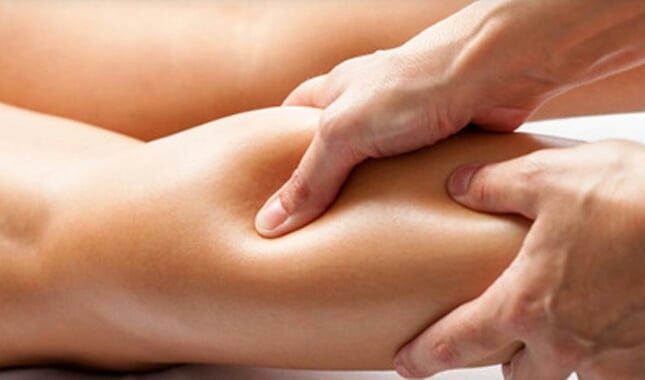
Sports massage can restore length and function to muscles that have knots and trigger points in them, causing reduced movement and pain.
PROS:-
• sports massage is specific, which is essential in eliminating most muscular pain • more qualified than a foam roller
• quicker recovery –increase the pressure in front of massage strokes, create a vacuum effect which releases tension that deprives the muscle of blood, nutrients and oxygen to repair
• increased tissue permeability – massage opens the pores in tissue membranes, allowing fluids and nutrients to pass through, removing waste products such as lactic acid and encourage intake of oxygen and nutrients to expedite recovery
• breaks down scar tissue – due to previous injuries or trauma, results in reduced flexibility and increased risk of injury and pain
• improved tissue elasticity – overtraining can reduce elasticity but massage helps to stretch the tissues
• improves micro-circulation – increases blood flow to tissues by dilating the blood vessels, allowing nutrients to flow through
• stretching – massage stretches tissues, which can’t be stretched by usual means, in both directions. It also reduces tension in the surrounding fascia
• reduced pain –massage reduces pain caused by tension and waste products by releasing endorphins
• relaxation – generates heat, increases circulation and stretches the muscle, which causes relaxation as a reflex
• reduces anxiety –by inducing relaxation and releasing endorphins
• invigorating –a brisk massage can improve energy levels
CONS:-
• if the massage therapist is not adequately qualified or registered the treatment and outcome are likely to be poor
STRETCHING
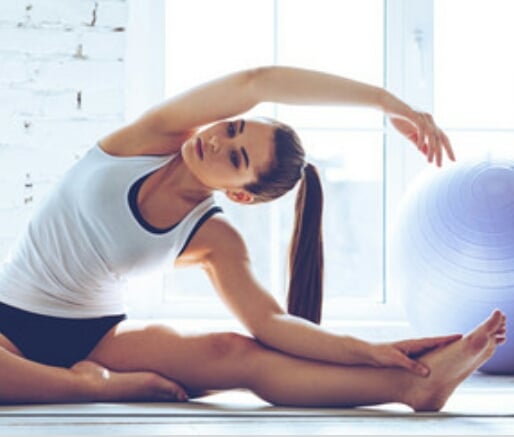
My clients always ask me if they should stretch and the answer is yes, but the stretching has to be appropriate for the time and situation. Stretching can be very effective at lengthening a muscle but many muscles are difficult to stretch due to the movement in a joint and knots react positively to direct pressure, not stretching. If you already have a lot of knots, I would advise having sports massage to release them, and then maintaining the muscles with stretching. There are various forms of stretching,(mentioned here and in my previous post about stretching) each of which have different uses.
There are lots of assumptions made about stretching which have little foundation
• we are stretching all of the time - we stretch deep lateral rotators when sitting and hip flexors when standing, yet we only believe we are stretching the hip flexors, for example, if we are lunging. However,in a lunge position the stretch will be effective or ineffective dependant on the angle of the pubic bone
• stretching is supposed to be a good warm-up activity, preparing the body to move quickly without injury. Research, however, has shown no benefit in terms of muscle soreness or injury prevention, and certain types of stretching may reduce strength or sport performance from 5% to 20%
• those who don’t stretch do not automatically have injuries or muscle failure, eg.people don’t stretch before they run to catch a train, builders don’t stretch before they carry heavy bricks
• stretching as in yoga or pilates classes or sports prep involves taking the stretch to the end-range of motion, yet there is no evidence that this improves the quality of movements in daily life because we don’t do many movements in our daily life at the end range of motion
• training tends to be very specific – eg.if you are training in a twisting stretch, that is a specific stretch, and may not translate into better motion in daily life
Research does not support stretching as a warm-up, or end-of-range stretching for health maintenance. It does, however, offer valid arguments for cooling down and increasing range of motion following exercise, when the muscles are more adaptable. However, warmed tissues may accommodate a stretch, but any given exercise will not warm up all muscles, so by pushing the force into an unwarmed tissue, injury is more likely.
STATIC STRETCHING:-
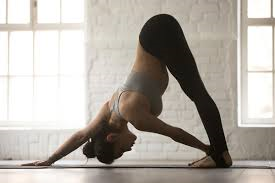
• the most common form of stretching where a relaxed muscle is brought under tension, and is maintained for a period of time, after which tension slowly decreases eg. reaching for the floor while standing with extended knees
PROS:-
• anyone can do it without pressure to push yourself immediately
• increases range of motion – improves ability to exercise
• improves posture – when used after workout while muscles are still contracting, static stretching helps return muscles to their original length
• safe to use - you can take your time to push the muscles to their limits
• better for cramps, pains, and aches - dynamic stretching will worsen the problem
CONS:-
• increased risk of injury when performed before strength or endurance training
• reduced maximum strength when performed before strength training
• decreased long term training effect when performed before or during strength training
• reduces muscle capacity- research shows that static stretching reduces the explosiveness of the muscles’ capacity to perform workouts especially when done prior to training
• doesn’t prevent injuries - static stretching involves holding a pose for a given time, it doesn’t so relaxes and lengthens rather than stretches
• dynamic stretches are better to warm the muscles up, particularly when running or jumping
• static stretching requires time as you need to hold the stretch for 20 to 30 seconds
• limited stretching - the stretches that you can do for each muscle are limited to its regular range of motion
• can be counterproductive when warming up - due to the prolonged stretching, the body tends to cool down, making your warm up ineffective and increasing risk of injury
• ineffective for certain muscle groups - can inhibit performance during your workout as all muscle groups should be warm, loose, and flexible
To get the most out of static stretching, it is best used to cool down and help the muscles return to their original state. It will also help you to relax and bring your heart rate down. It can also be useful in increasing range of motion when used within an hour after finishing strength or endurance training. At this time, the negative effects on performance and risk of injury are no longer relevant and the muscles are already warmed up.
BALLISTIC STRETCHING:-
• brings muscles at great length through fast and powerful movements. Maximum muscle length is not maintained as with static stretching because the limbs move back immediately eg.quickly swinging an extended leg forward until the movement is stopped by muscles reaching their maximum length
PROS:-
• can be used for warming up
CONS:-
• activates the stretch reflex so the muscles can’t relax and range of motion does not increase
• large peak tension on muscles caused by the powerful bouncing movements increases risk of injury
• reduced maximum strength when performed before strength training
Generally not recommended apart from as a form of continued warming up.
DYNAMIC STRETCHING:-
• uses sports-specific movement to prepare the body for the activity to come, simulating movements that are important for a certain activity. It doesn’t focus on a single muscle like static stretching eg. lifting one knee as high as possible while walking to prepare for a 100m sprint. Dynamic stretching actively stretches the muscles within their normal range of motion and is therefore safer than ballistic stretching which uses the speed of a body part to passively stretch muscles beyond their normal functioning range of motion.
PROS:-
• increased range of motion, especially in sports-specific movements
• effective and safe warm up prior to exercise
• small acute increases in maximum strength compared to other stretching methods
CONS:
- • less effective in increasing range of motion than Proprioceptive Neuromuscular Facilitation
Dynamic stretching is an effective and safe way of warming up the muscles prior to exercise, but must resemble the exercise you want to perform.
PROPRIOCEPTIVE NEUROMUSCULAR FACILITATION (PNF):-
• originally developed as a way to relax overactive muscles and effective in increasing range of motion eg. passive stretching with the help of a partner, which strongly activates the muscle while the partner makes sure no movement occurs. The muscle then relaxes the muscle is passively stretched even further, maintaining tension for longer
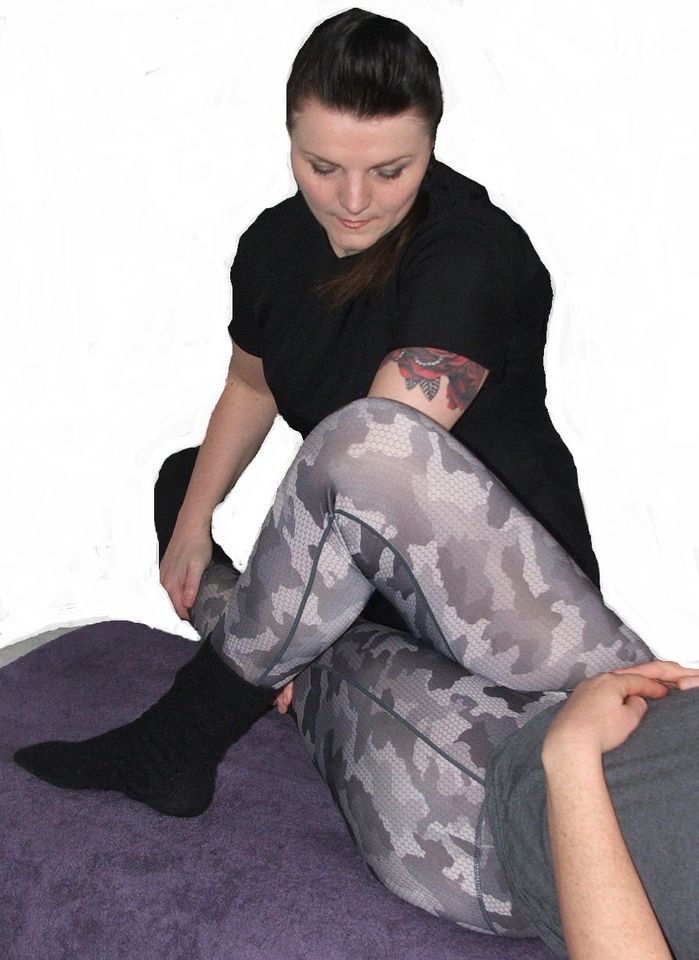
PROS:-
• large increases in range of motion
CONS:-
• requires a partner
• reduced maximum strength after performing PNF
PNF is a very helpful in improving range of motion but it is best done on a non training day due to the large amount of stress on the muscles.
